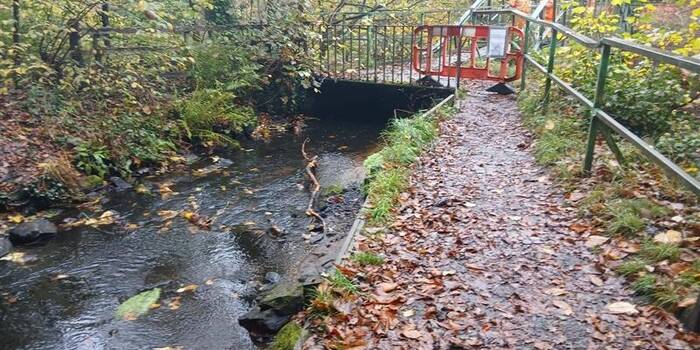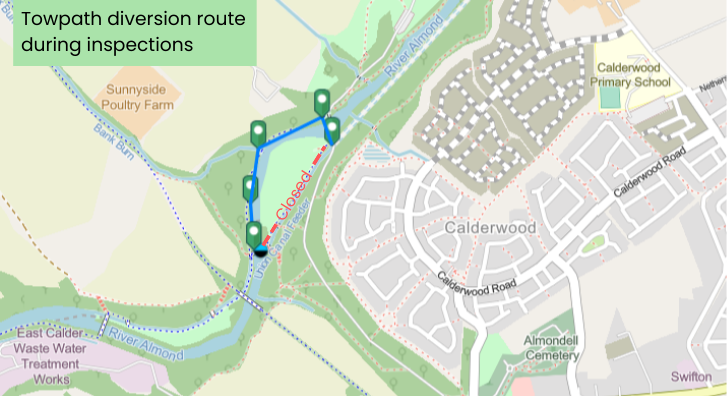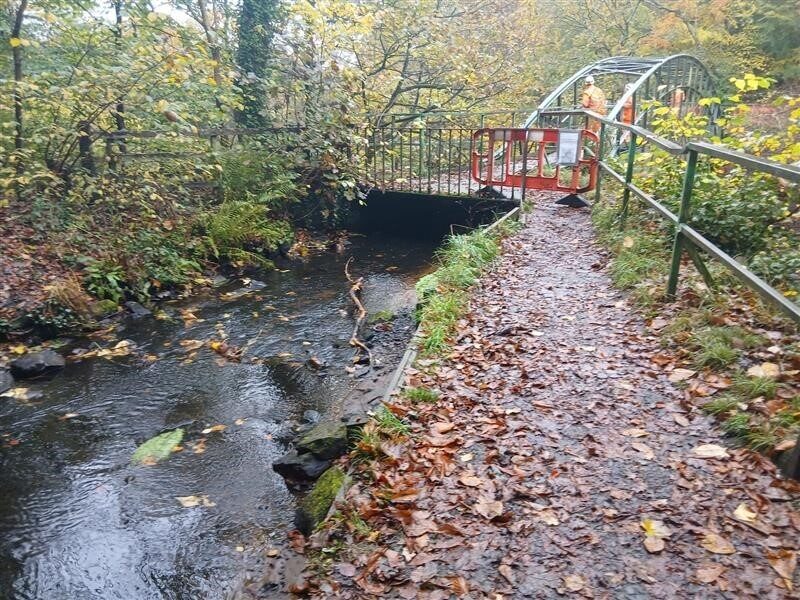Almond Feeder Aqueduct: Temporary Closure
The Almond Feeder is an open channel, almost 2 miles long and punctuated by four masonry tunnels and a 200-year-old, cast-iron feeder aqueduct, which carries the feeder over the River Almond through a slender, one-metre-deep cast-iron trough.
While appearing to be a fairly insignificant feature in the landscape, the feeder plays a crucial role in controlling flows of water in the Union Canal through the city of Edinburgh. In fact, the feeder is the canal’s sole supply of water, which it takes from Cobbinshaw Reservoir in the West Lothian hills.

To ensure a safe and controlled flow of water, we conduct regular inspections of the feeder’s embankments, masonry and iron structures. Recent inspections revealed that the cast-iron aqueduct shows evidence of defects and requires a full structural assessment. From 20th October, for one week, our Structural Consultant, AECOM, will work with our Engineers to survey and assess the condition of the feeder aqueduct.
There will be a short diversion around the area where the team is working. The diversion route is marked with green markers below, and you’ll also find diversion signs on the spot.

Feeder aqueduct facts
• The feeder aqueduct is more than 200 years old.
• Cast-iron may seem an unusual choice for an aqueduct, but was a material favoured by engineer Thomas Telford at that time. Why? It’s a strong material that was cheaper and lighter than masonry, which could be fabricated in a foundry for delivery to site and relatively fast assembly on the spot (a 19th century flat pack, which hopefully wasn’t as much of a headache to assemble as our modern-day ones!).
• Today, Scottish Canals is responsible for monitoring the water levels in the reservoir feeder and canal, and we maintain the grade-A-listed bridge.

Questions?
If you have any queries for us in the meantime, please get in touch with us at: enquiries@scottishcanals.co.uk, or on 0141 332 6936 (Monday to Thursday 8.30am-5pm, Friday 8.30am - 4.30pm).